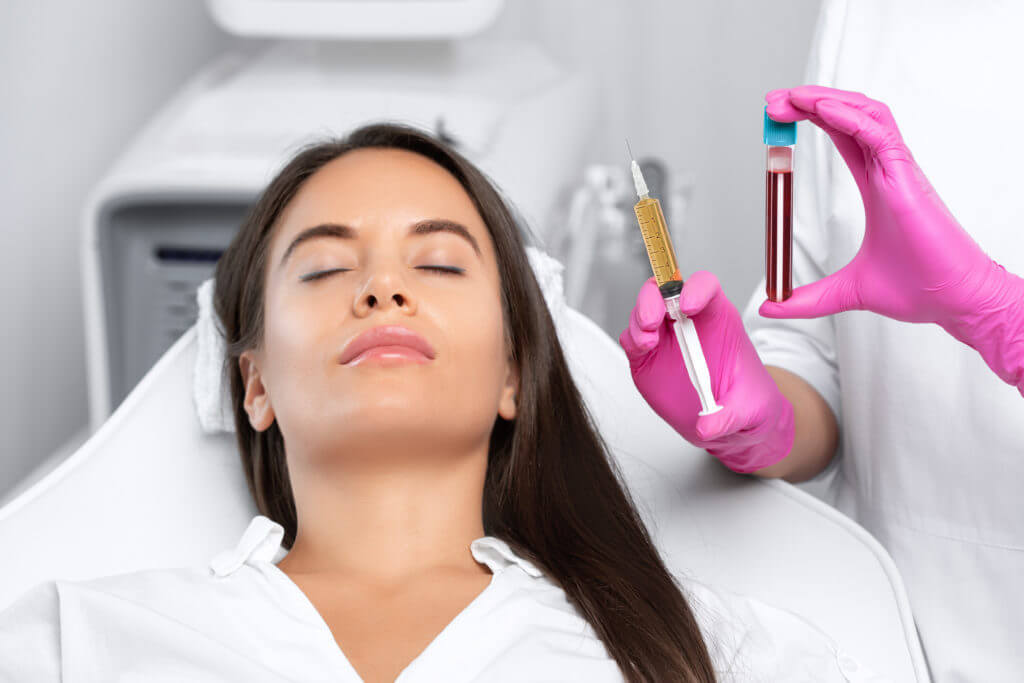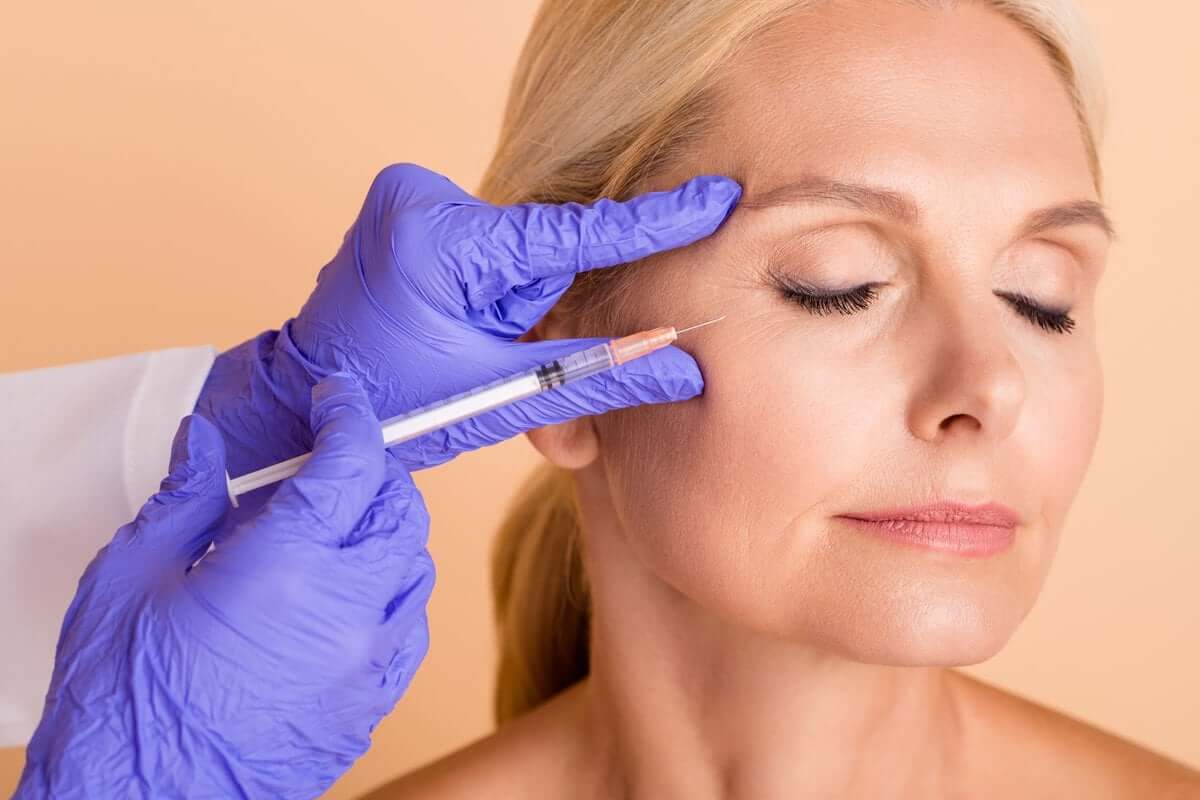Many clients confuse Platelet Rich Plasma (PRP) with Platelet Rich Fibrin (PRF). While there are similarities between the two, there are also differences that make them unique from each other. In this blog, you will find the distinguishing factor between the two.
What is Platelet Rich Plasma?
Platelet-rich plasma is made up of two parts: plasma, which is the liquid portion of blood, and platelets, which are a kind of blood cell that aids in wound healing. Platelets are well-known for their clotting properties, but they also include growth factors that can induce tissue regeneration and repair in the treated part. Platelet-rich plasma is the blood with a higher concentration of platelets than usual.
To make platelet-rich plasma, physicians take a blood sample from a patient and place it in a centrifuge, which spins the sample, isolating the platelets from the other blood components and concentrating them inside the plasma.
Platelet-rich plasma (PRP) injections are increasingly utilized for shoulder discomfort caused by rotator cuff tears, Achilles tendon ruptures, and other soft-tissue injuries. PRP has been shown to enhance function and reduce pain in persons with tendonitis or chronic tendinosis diseases like tennis elbow or golfer’s elbow.
PRP injections provide several advantages, including reducing the need for anti-inflammatories and harsher drugs like opioids. Furthermore, because PRP injections are made from your blood, they have few adverse effects because your body will neither reject nor react badly to them.
PRP injections are also becoming more popular for various conditions, including sports injuries and hair loss. The therapy accelerates healing in a specific location by using a patient’s blood cells.
What is Platelet Rich Fibrin?
The platelet-rich fibrin (PRF) material is a byproduct of platelet-rich blood (plasma). In a nutshell, PRF is a blood byproduct. Platelets and growth factors—the “signaling” chemicals that allow cells to communicate—are particularly abundant.
PRF is a technique that boosts bone and soft tissue regeneration. Its application in regeneration periodontics and wound healing has recently been promoted.
Platelet Rich Fibrin speeds up the process of healing in the body. Our bodies heal by sending cells to the wound to begin healing. Platelets aid in the formation of blood clots and also help in the healing and repair of the body by encouraging stem cells and tissue regeneration.
What is Platelet Rich Plasma used for?
- Tendon, Ligament, Muscle, and Joint Injuries – PRP injections might help with various musculoskeletal ailments and disorders. Chronic tendon injuries, such as jumper’s knee or tennis elbow, can take a long time to heal, so including PRP needles in your treatment plan can help speed up the healing process. It can reduce discomfort and allow you to return to your favorite activities sooner.
- Post-surgical healing: Doctors initially utilized PRP to speed up recovery after a jaw or cosmetic surgery. PRP injections after surgery are now used to assist mend muscles, tendons, and ligaments, which have notoriously long recovery rates.
- Osteoarthritis: PRP injections may help treat osteoarthritis pain and stiffness by altering the collaborative environment and lowering inflammation, according to early studies, but further research is needed.
- Hair Loss: PRP injections can help prevent hair loss and promote new hair growth in men with male baldness. PRP can also help with hair growth stimulation following hair transplants.
- Skin Rejuvenation: Although PRP injections are occasionally used as an anti-aging therapy, there is little proof that they diminish wrinkles and other indications of age.
What is Platelet Rich Fibrin used for?
- PRF (platelet-rich fibrin) contains several features that help heal and regenerate.
- Periodontal intrabony abnormalities can be treated using a PRF membrane. When the suture cannot connect the mucosal edges, it protects exposed wounds from the oral environment.
- In a maxillary sinus lift technique, PRF combined with freeze-dried bone allograft (FDBA) increases bone regeneration. Before implant insertion, the healing time is significantly reduced.
- PRF may operate as a biologic cement, holding the particles together and facilitating bone graft manipulation.
- When compared to healing without PRF, PRF significantly improves new bone growth.
- PRF membrane is the only grafting material to achieve successful maxillary sinus floor augmentation.
- PRF membrane aids in wound healing, surgical procedure protection, and soft tissue restoration and may operate as a “biological connection” when combined with a bone transplant.
- Platelet-rich fibrin is a blood concentrate used to regenerate soft tissue and bone structure.
PRP Therapy Risks and Side Effects
A PRP injection is a low-risk technique that seldom produces severe adverse effects. Because the treatment involves a blood draw, you should stay hydrated and eat before the procedure to avoid feeling lightheaded. You may have discomfort and bruising at the injection site after the operation.
PRP injections have a reduced risk of adverse response than other injectable drugs like corticosteroids since they are made up of your cells and plasma. Less common risks of PRP injections include:
- Bleeding
- Tissue damage
- Infection
- Nerve injuries
Advantages of using Platelet Rich Fibrin (PRF)
Because PRF is a byproduct of the patient’s blood, it is both safe and quick. As a result, disease transmission is not a concern. A smaller blood volume is collected through IV during the outpatient surgical procedure. The PRF centrifuge machine is used to spin down the blood. The PRF is created and ready to use in less than fifteen minutes. It can also be made quickly and easily at the doctor’s office while the patient has an outpatient surgical procedure, such as inserting dental implants or other methods.
Furthermore, one of the main advantages of PRF is that it is a minimally invasive technique with low risks and satisfactory clinical results, such as preventing complications or implant failure, especially in elderly patients with age-related conditions.PRF has many clinical applications, including bone grafting for dental implants, ridge augmentation procedures, closure of cleft, lip, and palate defects, and sinus lift procedures. PRP aids the body in utilizing the common healing pathways at a much faster rate; the body rushes many cells and cell types to the wound to begin the healing process. It also aids in the healing of bone abnormalities by the creation of small cysts or the extraction of teeth.
The disadvantage of using Platelet Rich Fibrin (PRF)
The success of the PRF technique is closely related to how the blood is collected and transferred to the centrifuge. Because it is autologous blood, the ultimate amount available may be modest. Furthermore, PRF modification requires little more than the clinician’s basic knowledge. This in-office technique is inappropriate for patients with bleeding problems or hematologic conditions. To discover if PRP is correct for you, you’ll need to consult with an experienced surgeon or physician.
PRP and PRF: Which one is for you?
Now that you know the difference between knowing, it is easier to know which is better for your skin’s needs. If you still have trouble finding out, Soul and Beauty Med X will be happy to assist you. Contact them through their website to book a consultation.









